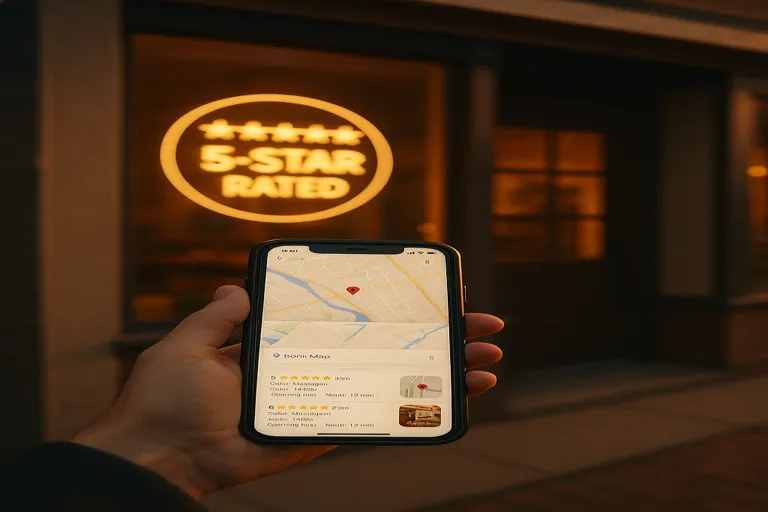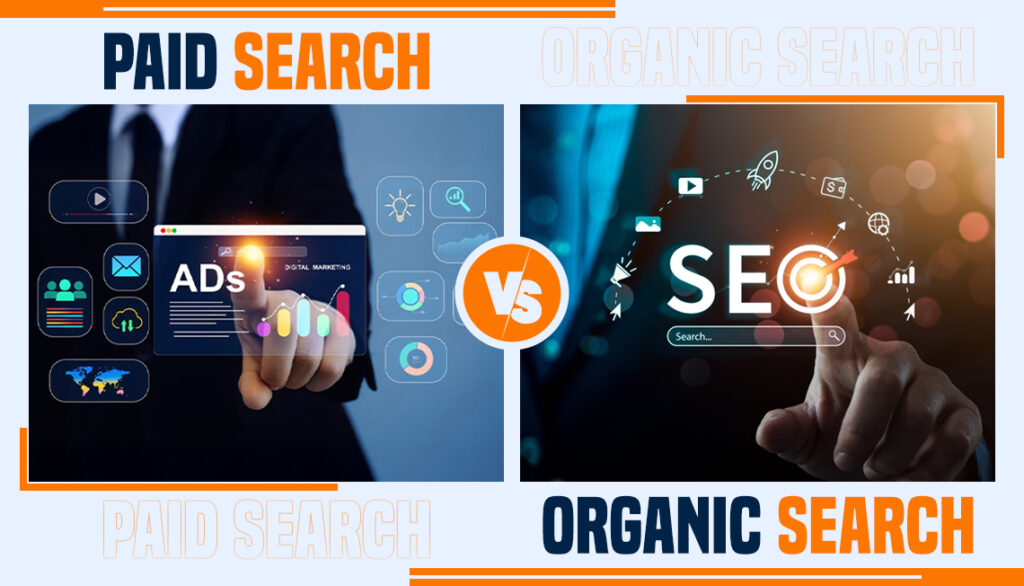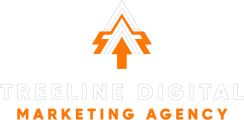If you’re looking to amplify your business’s visibility online, understanding what Google Ads is could be pivotal. It’s an advertising platform that provides a strategic edge by allowing you to target potential customers actively searching for services like yours. With its pay-per-click model, you only pay when someone clicks on your ad, ensuring cost-effectiveness. Yet, the real question is, how can you leverage this tool to maximize your ROI?
Key Takeaways
- Google Ads is an online advertising platform used by businesses to reach potential customers actively seeking their services.
- It operates on a pay-per-click model, allowing advertisers to pay only when users click their ads.
- The platform offers various ad types, including Search, Display, Video, Shopping, and Performance Max Campaigns.
- Ad placements are determined by an auction system, considering bids and Quality Scores.
- Google Ads provides detailed analytics for tracking conversions and optimizing return on investment (ROI).
What Is Google Ads and Why Should You Care?

You should care about Google Ads because it offers a strategic edge over traditional advertising by precisely targeting potential customers online.
Unlike generic ads, Google Ads lets businesses of all sizes reach users actively seeking their services, ensuring efficient use of your marketing budget.
As digital landscapes evolve, Google Ads remains an essential tool in 2025, providing adaptability and measurable results.
What Makes Google Ads Different from Traditional Advertising?
While traditional advertising often relies on broad and untargeted methods, such as TV commercials and print ads, Google Ads offers a precision-driven approach that’s fundamentally different.
Google Ads explained simply, allows you to reach your target audience with surgical accuracy. With pay-per-click advertising, you only pay when someone engages, making it cost-effective and efficient.
Here’s what sets Google Ads apart:
- Targeting: Use keywords and demographics to reach specific audiences.
- Flexibility: Adjust campaigns in real-time based on performance.
- Measurability: Track conversions and ROI with detailed analytics.
- Budget Control: Set spending limits that suit your business.
- Scalability: Easily expand campaigns as your business grows.
This strategic approach empowers you, providing the freedom to optimize and control your advertising efforts effectively.
Who Uses Google Ads (And Why)?
Many businesses—from small startups to large corporations—use Google Ads because of its unparalleled reach and precision. You might find it especially beneficial if you’re in the home services sector.
Google Ads for home service companies allows you to target potential customers actively searching for your services, ensuring your ads are shown to the right audience. This strategic targeting can greatly enhance your lead generation efforts.
Google Ads is a powerful tool for those seeking freedom from traditional advertising constraints, offering you measurable results and control over your budget. It enables precise audience targeting, allowing you to reach customers at various stages of their buying journey.
Why It Still Works in 2025
As businesses continue to embrace digital transformation, Google Ads remains an essential component of any effective marketing strategy, even in 2025.
Understanding what Google Ads is and how Google Ads works gives you a strategic edge. Its adaptability and scalability guarantee you reach the right audience with precision.
Here’s why it still works:
- Advanced Targeting: You can reach users based on search intent, demographics, and interests.
- Cost Efficiency: Only pay when someone clicks, guaranteeing budget-friendly campaigns.
- Real-Time Analytics: Access performance data instantly to optimize strategies.
- AI-Driven Insights: Take advantage of Google’s AI to enhance ad placements and effectiveness.
- Diverse Formats: Utilize text, video, and display ads to engage users across platforms.
These features empower you to make data-driven decisions and maximize your advertising ROI.
How Google Ads Actually Works (Without the Jargon)

You’ll understand Google Ads better by examining its key components.
The platform operates on a pay-per-click model, meaning you pay only when users click your ad, and it uses an auction system to determine ad placements based on bids and Quality Score.
Ads appear across Google’s network, including search results, websites, and YouTube, ensuring you reach your target audience effectively.
What Is PPC (Pay-Per-Click)?
PPC, short for Pay-Per-Click, is a digital advertising model where you pay only when someone clicks on your ad.
It’s a strategic way to manage your google ads budget effectively. You can use different types of google ads to reach your target audience, from search ads to video ads, yet you only pay for tangible results—clicks.
Here’s how PPC empowers you:
- Control: Set your budget and adjust as needed.
- Flexibility: Choose from various types of google ads.
- Precision: Target specific audiences and keywords.
- Efficiency: Maximize ROI with strategic planning.
- Measurability: Track performance with clear metrics.
How the Google Ads Auction Works
Understanding how Google Ads actually works begins with grasping the mechanics of the Google Ads auction. Each time someone searches, an auction determines which ads appear and in what order.
It’s not just about bidding high; Google considers ad relevance and anticipated click-through rates. Effective google ads targeting guarantees your ad reaches the right audience, maximizing potential.
Your ad’s position is influenced by your bid and ad quality. Strategic bidding, aligned with your conversion rate optimization goals, can enhance your ad’s visibility without overspending.
By understanding these dynamics, you can craft campaigns that not only appear prominently but also drive meaningful engagement and conversions.
Ultimately, mastering this auction process empowers you to achieve greater control and flexibility in your advertising efforts.
What Is Quality Score?
Quality Score is a significant metric in Google Ads that directly impacts your ad’s performance and cost. It measures the relevance and quality of your ads, keywords, and landing pages. A higher Quality Score can lower your cost-per-click and improve your ad position, making it essential to optimize Google Ads effectively.
Here’s what influences Quality Score:
- Expected Click-Through Rate (CTR): Predicts how likely users will click your ad.
- Ad Relevance: Guarantees your ad matches the search intent.
- Landing Page Experience: Evaluates the quality and relevance of your landing page.
- Historical Performance: Considers past ad performance for consistency.
- Ad Extensions Impact: Assesses the usefulness of additional information in your ads.
A strategic approach to these factors guarantees a better Quality Score, opening up greater freedom in ad performance.
Where Do Google Ads Appear?
While traversing the digital landscape, you might wonder where Google Ads actually show up. Google Ads appear across a vast network, strategically positioned to capture your audience’s attention.
Search ads vs display ads highlight the difference: search ads are text-based, located on Google search results pages when users actively seek information. In contrast, display ads are visually engaging, appearing on partner websites within Google’s Display Network, reaching users in different browsing stages.
Performance Max campaigns leverage Google’s AI, seamlessly integrating ads across all channels—search, display, YouTube, and more—maximizing reach and effectiveness.
This strategic placement guarantees your ads are visible where potential customers spend time, enhancing brand presence and driving engagement without the guesswork. It’s about being seen, wherever your audience is.
The 6 Types of Google Ads (And Which Ones Make Sense for Small Businesses)

When choosing Google Ads types for your small business, it’s essential to understand each option’s strengths and how they align with your goals.
Search Ads are ideal for capturing intent-driven traffic, while Display Ads help boost brand awareness with visually engaging content.
Video Ads on YouTube, Shopping Ads, and Performance Max campaigns each offer unique advantages, so consider which formats best support your objectives and audience.
Search Ads
Search Ads are an essential component of Google Ads, particularly for small businesses aiming to capture intent-driven customers. They’re perfect for targeting users actively searching for services like yours.
To get started, set up a Google Ads campaign and focus on local Google Ads for small business. By strategically selecting keywords and crafting compelling ad copy, you can drive relevant traffic to your site.
- **Identify *local keywords*** to guarantee your ads reach nearby customers.
- Optimize ad copy to highlight unique selling points.
- **Set a *realistic budget*** that aligns with your business goals.
- **Monitor *performance metrics*** to adjust strategies as needed.
- Utilize location targeting to maximize local impact.
Search Ads empower you to attract ready-to-buy customers and enhance your market presence effectively.
Display Ads
Display Ads offer a strategic avenue for businesses to expand their reach beyond search results, capturing potential customers as they browse websites, watch videos, or use apps within Google’s Display Network.
These ads can greatly boost brand visibility and engagement if you craft them wisely. However, common Google Ads mistakes, like targeting too broad an audience or neglecting to optimize creatives, can hinder performance.
To improve your click-through rate on Google Ads, focus on precise audience targeting and compelling visuals. Test different ad formats and placements, and analyze performance metrics regularly.
Video Ads (YouTube)
Video ads on YouTube offer a dynamic way to engage potential customers through visual storytelling. They provide a strategic opportunity to capture attention with creativity and precision.
If you’re wondering if Google Ads is worth it, consider the potential reach of YouTube’s vast audience. Mastering how to write Google Ads effectively can greatly enhance your message delivery.
Here’s why video ads matter:
- Visual Impact: Engage viewers with compelling visuals and stories.
- Targeting Precision: Reach specific demographics based on interests and behaviors.
- Measurable Results: Track views and interactions to gauge success.
- Cost-Effective: Pay only when viewers engage, optimizing your budget.
- Brand Awareness: Build recognition and trust through repeated exposure.
Video ads are a powerful tool for any business seeking growth and visibility.
Shopping Ads
Shopping ads offer an efficient way to showcase your e-commerce products directly to potential buyers. Unlike traditional text ads, these ads use product images, prices, and store names, making them visually compelling. They appear at the top of search results, giving your products prime visibility.
When comparing Google Ads vs Facebook Ads, remember that Shopping ads focus on intent-driven shoppers actively searching for specific items, whereas Facebook ads are more about discovery within social feeds.
To leverage Shopping ads effectively, optimize your product feed with accurate data and competitive pricing. This strategy not only increases click-through rates but also boosts conversions.
In a market where every click counts, Shopping ads offer a strategic edge, providing freedom to reach ready-to-buy audiences.
Performance Max Campaigns
Although digital advertising options are vast, Performance Max campaigns stand out by leveraging Google’s AI to streamline ad management across all channels. This campaign type empowers you to maximize results while minimizing manual effort, perfect for those who value efficiency and freedom.
Performance Max automatically optimizes your ads across Google’s entire inventory, including Search, Display, YouTube, and more, based on your business goals.
Here’s why you should consider Performance Max:
- Unified Campaign Management: Simplifies handling multiple ad types.
- AI-Driven Optimization: Google’s AI learns and adapts, enhancing ad performance.
- Comprehensive Reach: Access all of Google’s networks with a single campaign.
- Goal-Focused: Aligns closely with your specific objectives for better outcomes.
- Data-Driven Insights: Provides valuable analytics to inform strategic decisions.
Embrace the potential of Performance Max to drive business growth efficiently.
App Campaigns
Building on the power of AI-driven campaigns, App Campaigns offer another strategic avenue for businesses, particularly those aiming to boost app downloads and engagement.
With App Campaigns, you don’t need to design individual ads. Instead, Google automatically generates ads using your app’s assets—like images, videos, and descriptions.
This freedom allows you to focus on what matters: your app’s growth.
How Google Ads Can Grow Your Local Service Business

To grow your local service business with Google Ads, focus on capturing more local leads by ensuring your ads appear when potential customers are actively searching.
Strategically allocate your budget to enhance local reach, maximizing ad visibility in your target area.
Use ad extensions to prominently highlight your services, providing essential information upfront to attract and convert leads efficiently.
Get More Local Leads
Harnessing the power of Google Ads can be transformative for local service businesses looking to generate more leads.
By strategically targeting your ads, you can effectively reach potential customers in your area, maximizing your marketing efforts.
Here’s how Google Ads can help you achieve this:
- Local Targeting: Focus your ads on specific geographic locations to attract nearby customers.
- Ad Scheduling: Display ads during peak times when your audience is most active.
- Call Extensions: Allow customers to call directly from your ad, simplifying the connection process.
- Location Extensions: Show your business address in ads, making it easier for customers to find you.
- Budget Control: Allocate resources efficiently by setting a daily budget that aligns with your financial goals.
These strategies empower you to connect with local leads effectively.
Show Up When People Are Searching
Many local service businesses wonder how to effectively appear when potential customers are actively searching for their offerings. Google Ads offers a strategic solution by allowing you to target keywords that align with your services. By bidding on these keywords, your ads can appear at the top of search results when potential customers are looking for what you offer. This approach guarantees your business gains visibility exactly when customers are primed to make decisions.
Google Ads also lets you set geographic parameters, so your ads reach users in your local area. This precise targeting maximizes your ad spend and connects you with the right audience.
With Google Ads, you maintain control over your campaigns, enabling flexible adjustments to meet evolving business needs.
Budget Smarter for Local Reach
Understanding how to budget effectively is key to maximizing the impact of your Google Ads campaigns, especially for local service businesses. Strategically allocating your budget guarantees your ads reach the right audience without overspending.
Focus on these key areas for smarter budgeting:
- Geo-targeting: Concentrate your ad spend on specific locations where your services are most needed.
- Ad scheduling: Display ads during peak times when potential customers are most active online.
- Keyword selection: Use long-tail keywords to target more specific searches, reducing competition and costs.
- Bid adjustments: Modify bids based on performance data to guarantee efficient spend.
- Performance tracking: Continuously analyze metrics to fine-tune your strategy and optimize ROI.
These strategies enable you to manage your budget effectively while expanding your local reach.
Use Extensions to Highlight Services
To effectively grow your local service business with Google Ads, consider using ad extensions to highlight your services. These powerful tools allow you to provide more information upfront, making your ads stand out.
By using location, call, and service extensions, you can attract potential clients by showcasing what sets your business apart.
Utilize call extensions to encourage immediate contact, and location extensions to drive foot traffic to your establishment. Service extensions let you display specific offerings, ensuring your audience knows exactly what you provide.
This strategic use of extensions maximizes your ad’s visibility and relevance, giving you an edge over competitors. Embrace this freedom to customize how your services are presented, facilitating a direct connection with those seeking what you offer.
Setting Up Your First Google Ads Campaign (The Right Way)

To set up your first Google Ads campaign effectively, start by selecting the campaign type that aligns with your business goals.
Next, establish a realistic budget that balances reach and cost-efficiency.
Focus on choosing the right keywords, crafting compelling ads, and closely monitoring performance to optimize your strategy.
Choosing the Right Campaign Type
Selecting the right campaign type is essential for maximizing your investment in Google Ads. When you align your campaign with your business goals, you gain control over your advertising strategy and gain greater freedom.
Analyze your objectives to determine which campaign will deliver the best results:
- Search Campaigns: Target users actively searching for your specific products or services.
- Display Campaigns: Increase brand awareness by showcasing image ads on Google’s partner websites.
- Shopping Campaigns: Perfect for e-commerce, promoting your products with detailed information.
- Video Campaigns: Engage audiences through video content, primarily on YouTube.
- Performance Max Campaigns: Leverage Google’s AI to run ads across all channels for ideal reach.
Choosing strategically empowers you to efficiently connect with potential customers and achieve higher returns.
Setting a Realistic Budget
Setting a realistic budget is essential for the success of your first Google Ads campaign. Begin by evaluating your overall marketing budget and determining what portion you’re comfortable allocating to Google Ads. This guarantees you maintain financial flexibility while testing this platform.
Consider your industry benchmarks and the average cost-per-click (CPC) to set daily or monthly limits that align with your goals. Use Google’s tools to estimate potential traffic and costs, guaranteeing your budget supports your campaign objectives.
Be mindful that initial campaigns might require adjustments as you analyze performance data. Optimize your ad spend by constantly reviewing results, refining your strategy, and reallocating funds towards high-performing areas. This strategic approach maximizes ROI without compromising your financial freedom.
Finding the Right Keywords
Identifying the right keywords is essential for launching a successful Google Ads campaign. You need to be strategic to guarantee your ads reach the intended audience.
Start by brainstorming terms that reflect your business and the products or services you provide. Use Google’s Keyword Planner to refine these ideas and assess their potential impact. Aim for a mix of high-volume and long-tail keywords to balance competition and specificity.
- Relevance: Ensure keywords align with your ad content and business goals.
- Search Volume: Choose terms with sufficient search frequency to attract traffic.
- Competition: Consider the competitiveness of keywords; balance is key.
- Cost-Effectiveness: Analyze cost-per-click rates to maintain budget efficiency.
- Intent: Focus on terms that reflect the user’s intent to convert.
Writing a Great Ad
Crafting a compelling ad is essential to capturing your audience’s attention and driving engagement. Start with a clear, attention-grabbing headline that speaks directly to your target audience.
Use concise, impactful language to convey your unique selling proposition, emphasizing benefits rather than features. Remember, your ad should answer the user’s query and motivate action. Incorporate relevant keywords naturally, ensuring your ad aligns with searcher intent.
Utilize strong calls-to-action to guide potential customers toward the desired outcome. Optimize your ad copy for mobile users, as a significant portion of searches occur on mobile devices.
Prioritize clarity and brevity, making every word count. Test different ad variations to identify what resonates best, iterating based on performance. A well-crafted ad is your key to revealing potential growth.
Launching and Monitoring
Before diving into the intricacies of launching your first Google Ads campaign, it’s crucial to lay a solid foundation by understanding key elements like audience targeting, budget allocation, and campaign objectives.
Strategic planning guarantees your ads reach the right individuals and achieve your goals efficiently.
Consider these steps:
- Identify Your Audience: Define demographics, interests, and behaviors to target.
- Set Clear Objectives: Know whether you’re aiming for clicks, conversions, or brand awareness.
- Allocate Budget Wisely: Determine daily spending limits and bid strategies for cost control.
- Craft Compelling Ads: Use persuasive language and visuals to capture attention.
- Monitor Performance: Regularly check analytics to tweak and optimize for better results.
Don’t Waste Money: Common Google Ads Mistakes to Avoid

Avoid hemorrhaging your budget by steering clear of common Google Ads pitfalls.
Narrow your targeting to reach your ideal audience, utilize negative keywords to filter out irrelevant clicks, and always track conversions to measure success accurately.
Don’t neglect mobile users or let your ads run without regular optimization to guarantee you’re getting the most out of your investment.
Targeting Too Broad
While aiming to reach a vast audience might seem advantageous, targeting too broadly in Google Ads can lead to wasted budget and missed opportunities for conversion.
It’s essential to refine your strategy to guarantee you’re reaching the right people. Broad targeting dilutes your message and increases costs without assured returns.
Here’s how to avoid this pitfall:
- Define your ideal customer: Know who you’re targeting to tailor your message effectively.
- **Use *location targeting***: Focus on specific areas where your potential customers are likely to be.
- **Leverage *demographic filters***: Refine age, gender, and interests to better align with your audience.
- Implement audience segments: Target users based on behavior and engagement.
- Regularly review campaign performance: Adjust settings based on data to optimize results.
Stay strategic to maximize your ad spend.
Ignoring Negative Keywords
Overlooking negative keywords can considerably drain your advertising budget, as it causes your ads to appear in irrelevant searches. This oversight means you’re paying for clicks that don’t convert, restricting your campaign’s effectiveness and freedom to focus on high-potential prospects.
Implementing a strategic approach to negative keywords empowers you to exclude terms that don’t align with your business goals. This precision guarantees your ads reach the right audience, maximizing ROI and freeing up your budget for more productive opportunities.
Regularly analyze search query reports to identify unproductive terms. Add these as negative keywords to refine your targeting. By doing so, you not only streamline your campaigns but also enhance ad relevance, allowing your business to engage more effectively with potential customers and foster growth.
Not Tracking Conversions
Many advertisers underestimate the importance of tracking conversions in their Google Ads campaigns. Without conversion tracking, you’re fundamentally flying blind, unable to see which ads drive real results. This oversight can lead to wasted budget and missed opportunities for optimization.
By strategically setting up conversion tracking, you can evaluate performance and make informed decisions.
Consider these key advantages:
- **Identify *high-performing keywords***: Allocate more budget to what works.
- **Understand *customer behavior***: Gain insights into user actions post-click.
- Optimize ad spend: Reduce costs by focusing on effective strategies.
- Measure ROI accurately: Calculate true return on investment.
- Enhance campaign strategy: Continuously improve based on data-driven insights.
Don’t let potential profits slip away. Embrace conversion tracking to reveal the full potential of your Google Ads investments.
Forgetting Mobile Users
Neglecting mobile users in your Google Ads campaigns can greatly hinder your advertising success.
Today, mobile devices dominate online activity, and ignoring this trend can limit your reach and effectiveness. Craft mobile-friendly ads to capture the attention of these users. Make sure your landing pages are responsive, quick-loading, and easy to navigate.
Analyze your campaign data to identify mobile user behavior and adjust your strategy accordingly. Use mobile-specific bid adjustments to allocate your budget strategically, making certain you don’t waste money on non-performing segments.
Embrace mobile ad formats like call-only ads or app promotions to engage users directly where they spend most of their time.
Letting Ads Run Without Optimization
While it might seem easy to let your Google Ads run without regular adjustments, doing so can quickly lead to wasted budget and missed opportunities.
To maximize your potential, you need to stay actively involved in the optimization process. By neglecting this, you risk inefficiencies and reduced effectiveness.
Consider these strategic points:
- Regularly review performance data: Analyze metrics to identify areas for improvement.
- Adjust bids and budgets: Optimize based on performance to guarantee cost-effectiveness.
- Refine targeting: Continuously update audience and keyword targeting to reach the right people.
- Test ad variations: Experiment with different ad copies and formats for better engagement.
- Monitor competition: Stay informed about competitors to maintain a competitive edge.
Active management guarantees your ads deliver the desired results without unnecessary spending.
What Makes a Good Ad? Secrets to Clicks and Conversions

To create effective Google Ads, focus on crafting strong headlines and compelling offers that capture attention immediately.
Ascertain your ad is relevant by aligning it with the landing page content and using clear calls to action that guide users toward conversion.
Leverage extensions and add-ons to enhance visibility and provide additional value to your audience.
Strong Headlines and Offers
Crafting strong headlines and compelling offers is essential for creating an effective Google Ads campaign. Your headline is the first impression, so make it count. A strategic approach guarantees your ad stands out in a crowded space, capturing attention and driving action.
- Relevance: Align your headline with the user’s search intent.
- Urgency: Create a sense of immediate need or action.
- Clarity: Communicate your message without ambiguity.
- Value Proposition: Highlight what sets you apart from competitors.
- Conciseness: Use clear, impactful language to convey your offer quickly.
Each element should work together to engage potential customers and spark their curiosity. A well-crafted headline paired with a compelling offer can greatly improve your ad’s performance, increasing both clicks and conversions.
Clear Calls to Action
How do you guarantee your Google Ads campaign effectively converts clicks into tangible actions? Incorporate clear calls to action (CTAs).
A compelling CTA guides users toward their next step, turning interest into engagement. Phrases like “Shop Now,” “Get Started,” or “Learn More” create urgency and direction, sparking immediate action.
Strategically positioning CTAs within your ad copy guarantees users know exactly what to do once they’re intrigued. Avoid vague language; precision breeds results. Keep CTAs simple, yet powerful, aligned with the ad’s overall objective.
Tailor CTAs to the audience’s desires for freedom, emphasizing benefits over features. Remember, a well-crafted CTA isn’t just a suggestion—it’s a strategic command, paving the way for conversions and maximizing your ad’s impact.
Ad Relevance and Landing Pages
A well-crafted call to action is only as effective as the ad’s relevance and the landing page that follows. You need to guarantee your ad aligns closely with what users are searching for and leads to a landing page that’s both compelling and relevant. This strategic alignment enhances user experience and boosts conversion rates.
To achieve this, consider the following:
- Keyword Alignment: Match ad copy with user search intent and landing page content.
- Consistent Messaging: Guarantee your ad and landing page convey a unified message.
- User-Centric Design: Create a landing page that’s easy to navigate and visually appealing.
- Fast Load Times: Optimize for speed to keep users engaged.
- Clear Value Proposition: Present a strong, clear benefit that encourages action.
Strategic precision leads to clicks and conversions.
Using Extensions and Add-ons
Leverage Google Ads extensions and add-ons to maximize your ad’s performance and drive conversions. These tools offer additional information and action options, enhancing your ad’s visibility and appeal.
Use callout extensions to highlight unique offers, price extensions to showcase product costs, and location extensions to attract nearby customers. Strategically integrating these with your ad campaigns can greatly increase click-through rates by making your ads more relevant and engaging.
Add-ons like automated bidding strategies optimize your budget, ensuring you achieve maximum results without micromanagement.
Google Ads vs. Facebook Ads: Which One Is Better for You?

When choosing between Google Ads and Facebook Ads, consider the differences in targeting capabilities.
Google Ads excels at capturing intent-driven searches, while Facebook Ads offers robust demographic and interest-based targeting.
Evaluating the pros and cons of each platform will help you decide when it’s strategic to use both together for maximum reach and impact.
Differences in Targeting
While both Google Ads and Facebook Ads offer robust targeting capabilities, they differ fundamentally in approach and application. Google Ads focuses on intent-based targeting, capturing users actively searching for products or services. This means you can reach potential customers right when they’re interested.
With Google Ads, you can target based on:
- Keywords: Capture search queries and match ads effectively.
- Location: Show ads to users in specific geographic areas.
- Device: Tailor ads to desktop, mobile, or tablets.
- Time: Schedule ads to appear at ideal times.
- Demographics: Adjust ads based on age, gender, and household income.
Facebook Ads, in contrast, excels in interest-based targeting, leveraging user data and behaviors to pinpoint audiences.
Your choice depends on whether you’re capturing demand (Google) or generating it (Facebook).
Pros and Cons of Each
Understanding the differences in targeting helps clarify how each platform can serve your marketing objectives.
Google Ads excels with intent-driven searches, perfect for capturing users actively seeking specific products or services. This makes it ideal for direct conversions. However, it can be competitive and costly, especially in saturated markets.
In contrast, Facebook Ads shine in audience targeting, leveraging detailed demographic and interest data to reach users based on lifestyle and preferences. It’s excellent for brand awareness and engagement, but less effective for direct sales if users aren’t in a buying mindset.
Consider your goals: if you want immediate sales, lean towards Google Ads. For building a community or brand presence, Facebook Ads might be your better choice.
Choose wisely to maximize your freedom.
When to Use Both Together
Combining Google Ads and Facebook Ads can strategically amplify your marketing efforts, leveraging the strengths of both platforms to maximize reach and impact.
Use both when you want to:
- Target Intent and Interest: Google Ads captures active search intent, while Facebook Ads excels in interest-based targeting.
- Expand Audience Reach: Utilize Google’s vast network and Facebook’s personalization to engage diverse demographics.
- Enhance Brand Presence: Reinforce your brand across multiple touchpoints, creating a cohesive customer journey.
- Optimize Budget Allocation: Balance cost-effectiveness by allocating budgets based on performance metrics from each platform.
- Leverage Data Insights: Gather extensive insights from Google’s search data and Facebook’s user behavior to refine strategies.
Harnessing both platforms empowers you to achieve a holistic approach, ensuring your marketing message resonates effectively across different channels.
Final Thoughts: Is Google Ads Worth It for You?

To determine if Google Ads is worth your investment, consider your expected ROI and whether it aligns with your business goals.
While it offers measurable outcomes and scalable growth, it’s not always the right fit for every business, especially those with limited budgets or niche markets.
Analyze your specific needs to decide if its benefits outweigh the costs for your situation.
What to Expect in ROI
While investing in Google Ads can seem intimidating, the potential return on investment (ROI) can make it a compelling choice for many businesses. You can strategically harness its power to drive measurable results.
Expect a dynamic environment where your ROI is influenced by several factors:
- Targeting Precision: Fine-tune your audience to maximize ad relevance.
- Budget Control: Flexibly adjust your spending to suit your business needs.
- Keyword Optimization: Experiment with keywords for cost-effective bidding.
- Ad Creativity: Craft compelling ads that capture attention and drive clicks.
- Performance Analysis: Utilize analytics to continuously refine strategies.
When It’s Not the Right Fit
After considering the potential ROI from Google Ads, it’s equally important to recognize situations where this platform mightn’t align with your business objectives.
If your target audience isn’t actively searching online or if your budget doesn’t stretch to optimize campaigns effectively, Google Ads mightn’t be suitable. Businesses with niche markets or those relying heavily on organic traffic might find other strategies more efficient.
Additionally, if you’re unable to dedicate time for continuous monitoring and adjustment, the cost might outweigh the benefits.
Your freedom to explore alternative platforms could lead to better engagement and ROI. Sometimes, traditional methods or other digital avenues like social media may offer more alignment with your goals, allowing you to maintain control over your marketing strategy.
Frequently Asked Questions
How Do I Measure the Success of My Google Ads Campaigns?
To measure your Google Ads campaign success, track key metrics like click-through rate (CTR), conversion rate, and return on ad spend (ROAS).
Use Google Analytics for deeper insights into user behavior and set clear goals aligned with your business objectives.
Regularly analyze performance data to optimize targeting and ad creatives.
Embrace A/B testing to refine strategies, ensuring your campaigns drive the desired results while maintaining the flexibility you value.
What Is the Average Cost per Click for Google Ads?
You’re curious about the average cost per click (CPC) for Google Ads, right?
Well, it varies widely depending on your industry, competition, and keywords. Typically, CPC ranges from $1 to $2 on the Google Search Network.
However, in highly competitive sectors like legal or insurance, it can soar to over $50.
To optimize your budget, focus on targeting, ad quality, and bidding strategies, ensuring you’re spending wisely while maximizing freedom in your marketing approach.
How Can I Improve My Google Ads Quality Score?
To improve your Google Ads Quality Score, focus on enhancing ad relevance, landing page experience, and expected click-through rate.
Use tightly-themed keyword groups and craft compelling ad copy that aligns with users’ search intent.
Confirm your landing page is fast, mobile-friendly, and relevant to your ads.
Regularly test and refine your strategies.
This approach empowers you to optimize your campaigns, giving you the freedom to achieve better results and control costs.
What Are Ad Extensions in Google Ads?
Ad extensions in Google Ads let you enhance your ad with extra information, giving users more reasons to click.
They’re essential for improving your visibility and click-through rate. Extensions can include call buttons, location info, additional links, or promotions.
Strategically use these features to provide more value and capture user interest. By optimizing ad extensions, you boost engagement and maximize your advertising potential, all while maintaining control and flexibility.
How Does Google Ads Billing Work?
Google Ads billing is straightforward. You set a budget and pay only when users click your ads.
Choose between automatic or manual payments. Automatic bills you after clicks or 30 days, whichever comes first. Manual lets you prepay, giving you more control.
Monitor spending in real-time, adjusting strategies as needed. This flexibility empowers you to optimize campaigns without overspending, aligning with your goals for freedom and strategic growth.
Conclusion
You’ve explored how Google Ads can be a game-changer for your business, offering precise targeting and measurable results. By understanding its mechanics, selecting the right ad types, and avoiding common pitfalls, you can maximize your ROI and boost brand visibility. While comparing Google Ads to Facebook Ads, think about your specific goals and audience. Ultimately, if used strategically, Google Ads can be a powerful tool for attracting new customers and driving growth for your business.






